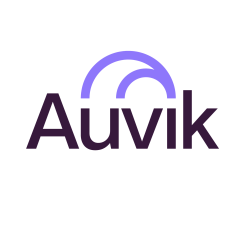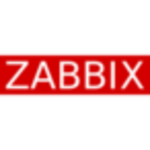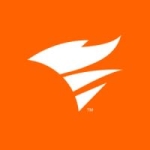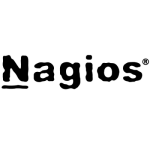What is our primary use case?
We utilize Auvik for monitoring our clients' environments.
How has it helped my organization?
It plays a highly critical part in our operations. A part of the product that we sell to our clients involves a service level agreement that we will respond to within X amount of time, and we'll monitor their environment for them. Because of that, this plays an absolutely critical function.
The collectors that they use are constantly connecting to Auvik to make sure that you're aware that it's active, it's running. You would think all of the other monitoring solutions out there do the same thing, and many do claim that, but most can't deliver that, whereas Auvik can. There have been many times when some of our other tools that are also monitoring things should be reporting that there's an outage at a location or a server is down or something like that, but that's just not the case. With those other tools, it doesn't even blip on their radar that the system is completely hard down and it's a big issue, whereas, with Auvik, the moment a collector disconnects, and it has been disconnected for the amount of time that we defined, it immediately alerts us and says, "We can't communicate with this machine." It's really handy. You can sell the feature all day long, but if that feature doesn't work, it's not a real feature. Auvik works. It's very reliable, at least from our experiences so far.
I enjoy it when it comes to visualizing the network mapping/topology for the organization. It doesn't just provide a network map. It gives us a global view, an actual Earth view, and it allows us to see where the devices are physically located, which is very handy. Especially if we need to dispatch something or if we need to compare a power outage to maybe a storm that's passing by, it gives us the map and visual of where a device is located. When you drill down into it, you can click on the actual nodes that are on the map and go down as granular as you want. You can see the actual network topology of the environment. It does a pretty good job of figuring out how it's all laid out. You've got a collector from Auvik that's sitting there, and it explores and discovers the devices. So far, I haven't seen an instance where it couldn't figure out the exact network topology. There's always this rare case where something gets kind of wonky in regard to how your server is set up. You might have multiple connections coming in or whatever, but so far, it has been able to define all that. That's something that a lot of people don't realize is normally a manual task. You have to break out Visio and start dragging and dropping a lot of icons, name it yourself, define the IPs, etc. Auvik does it automatically, which is just cool.
Our client environments are not a single vendor product. There are multiple vendors coming in from different directions. We deal in data systems, which is the industrial automation type of stuff that deals with wastewater treatment plants, water treatment plants, etc. Due to the nature of our business, being able to have an accurate inventory of what's at what site, what's the IP address, or what are the specs on a server is super important.
It provides an integrated platform for a few brands. It doesn't provide a fully integrated platform for all the brands and manufacturers out there. It's probably a little bit more skewed toward Cisco products, which we don't use a lot. It would be nice if they had full integration into Dell's tools, as well as VMware for Hypervisor and things like that. Having a single integrated platform would save us a lot of time across the board. Currently, we have to use Auvik for monitoring. It's probably the most reliable one that we have so far. We've used quite a few in the past, including Ninja, some Microsoft options, and several others. Everyone promises it, but far and few can truly deliver a single pane of glass experience. The Auvik tool gives us a single pane of glass for all of the monitoring needs, and then, if we need to drill into on a system-by-system basis and remotely manage the system and remote into a machine, we have to use other tools for that.
What is most valuable?
My favorite feature so far is the alerts section. We've got our main company at the top, and then all of our customers are underneath that. We can either filter by a single customer or one of their sites specifically, or look at it from the top down and see the whole picture. It's an easy way for me to be able to have a high-level overview. I can see the status of all of our sites simultaneously without having to really dig in and get super granular unless I want to. It gives that ability too, which is cool.
What needs improvement?
The functionality on a PC is definitely better than in a mobile environment. If you are logging in to Auvik on your phone or on a tablet, it's a little janky at times, but on a PC, it's fantastic.
If I could make a wish list of things that I would like to see from Auvik, I would definitely love to see more vendor integration with specific manufacturers. They've got that integration with Cisco, but it would be awesome to also have that with other major brands, such as HP, Dell, and Lenovo. It should have integration with more vendors, and in general, being able to quickly and easily access vendor-specific tools from the portal would be amazing. A real-life case scenario would be that we know that Dell servers have iDRAC cards on them, which allows for remote control and a remote KVM keyboard, video, and mouse functionality. It would be nice to be able to have the direct link baked in and be able to quickly just say, "I need to remotely manage this machine," and then you can just click, and you're in. In regards to VMware, VMware is one of the top three hypervisors for virtualization. It would be awesome to be able to quickly and easily identify that this is the VMware cluster, this is the ESXi server, and this is a vCenter. We should be able to quickly and easily log into consoles and remotely manage things as needed from there. This kind of functionality for the Cisco products is baked into Auvik right now, but it doesn't exist for other manufacturers. It's one of those things that will happen as time goes by. They need to make sure that it's embedded and done properly and that they're working with the manufacturers directly, instead of trying to duct tape a solution.
The other improvement would be more on the software side of things in terms of understanding that patch management happens and vulnerabilities are security patched all the time. There should be more direct integration with Microsoft updates. Pretty much everyone uses Windows, and being able to easily identify that there's a patch pending, and maybe even be able to push it, would be awesome.
For how long have I used the solution?
My direct experience with Auvik has been since August.
What do I think about the stability of the solution?
In terms of full stability, which also includes their response to security issues, I would rate it a 9 out of 10.
What do I think about the scalability of the solution?
The sky's the limit. There don't seem to be any actual limits on the number of collectors that you're able to deploy. We started out at 40, and we're at 63 right now. It scales easily and effortlessly. So, I would rate it a 10 out of 10 in terms of stability.
How are customer service and support?
It's decent. It's a little difficult to get a hold of them sometimes, but, overall, it's not bad. Comparing it to the big three computer manufacturers, Dell, HP, and Lenovo, they fall in Dell's mid-tier level support. It's pretty decent.
How would you rate customer service and support?
Which solution did I use previously and why did I switch?
We use multiple tools. We went for Auvik because of its dependability. We have to have a reliable report as to what's up and what's down. Ninja is great on a surface level, but it doesn't update live. It has a periodic updating process. You don't really know when it's going to update next. You would expect it to be live, but it's not. Having accurate, live information was the reason why we started with Auvik.
This isn't just a one-application show for us. We've got Auvik. We've got Ninja, and we've got several other tools that we use for monitoring to cover redundancy and any spillover situation. By far, Auvik is the cleanest. It's the most up-to-date. It's the most accurate. Ninja, for example, is a decent competitor against Auvik's platform. Ninja reports things, but the information is very clustered up and very hard to read and discern. Once you get used to it, you're okay, but on your first experience with Ninja, it's horrible. Auvik is very clean. It has that modern look and feel to it. Anybody who uses modern apps and web apps is going to be able to quickly and easily figure out his or her way through it.
The most important thing when comparing Auvik versus other competitors is that we have found Auvik to be the most reliable. It will report when things are out. It will report everything based on how we have it set up and defined. This reliability is very important. Ninja is great, and as a team, when we were using only Ninja, and we weren't utilizing Auvik at all, Ninja would report things, but it wouldn't always report that live, up-to-date view of what's going on. You might have alerts saying, "Oh, it's out." You're like, "No. No, we cleared that alert. Why is it still showing that?" There's no real easy way to discern how to clear the alerts if it just doesn't detect it automatically, whereas Auvik is always up to date. It's always communicating, and if it ever drops that communication, it immediately notifies you, which is awesome.
The alerts that are provided to us correspond and correlate directly to the SLAs that we are selling and promising to our clients. So, in the event of a full outage or whatever, it gives us the ability to quickly and easily identify that there is an outage at this site, and it's this device that is currently causing the problem, or we haven't had any communication for X amount of time to this IP address. We are then able to say, "Okay, this is a high priority because it's affecting outage, and it's affecting the service for our client," whereas, something like when disk-based utilization is 80% has a high priority, but it's not a major issue. Auvik allows us to quickly and easily prioritize types of incidents, for example, outage versus 80% storage. It allows us to clarify whether something is an incident or not.
How was the initial setup?
I was not involved with the setup, but I was involved in the sourcing and options. That was me working with the company, before I actually worked with the company directly, and looking at all the different options that were out there. Auvik seems to be the one that made the most sense. In regards to the setup process, I can see that the general setup itself as an administrator is not difficult. It takes 15 to 30 minutes on average. You can add in some videos to watch if you want to figure out how to do something or whatever, and you're probably going to be up and running within about two hours.
It doesn't require any maintenance. It does that itself. It updates its own collectors. You have to just install the collector. Once that's installed, it'll update itself. Outside of that, it's a web or cloud tool. It's software as a service. So, they handle all the maintenance and things like that on the backend from there.
Being a cloud solution, the always-on communication between Auvik and its collectors gives you that real-time status, and it's amazing. With an on-prem solution, if something goes wrong with your equipment, that's going to cause issues. If you're doing it even in your own private spot or even public cloud or whatever, you're having to control that kind of infrastructure, environment, and things like that. It's one of those things that annoys people when they see that there's going to be an outage for a tool because of updates, maintenance, and things like that, but Auvik has been always on the spot making sure that we're aware, "Hey, heads up on this date at this time, maintenance on these machines is going to be happening. These are the things that will either function or non-function. These are things that are going to be changing and so on, so forth." I've also seen several instances where they responded to a security threat, and they did that really quickly. Our outage time on that from Auvik was measured in minutes. If we were doing that and hosting it ourselves, even though we have a decently-sized team, we don't have the time to do all that kind of work. Monitoring and maintaining all that is amazing with the whole cloud option.
What was our ROI?
It's hard to measure what it's providing. However, considering the cost that we are paying in regards to what we're getting out of it, it has easily paid for itself within the first few months just based on our current deployment environment. We have to have accurate information. We have to know when something is up and down, and if it's not, we break SLA, our service level agreement, with our clients. If we do that, we have to pay money to our clients because we broke contracts. One broken contract is going to cost us five grand, and this prevents us from losing that, so it's awesome.
There is a reduction in our mean time to resolution. When we were using just Ninja, we wouldn't even be aware that there was an issue until Ninja just had an update. Now, we're aware within the timeframe that we assigned, which is 15 minutes, that communication has been lost. We give it a couple of minutes to make sure that it's not just an internet blip or whatever, and then we're able to quickly attack it. With Ninja, we wouldn't even be aware until a customer calls us to say something is broken. It's time lost in regards to the fact that we should have been aware of it before the customer even had a chance to pick up the phone and do that.
What's my experience with pricing, setup cost, and licensing?
To someone comparing network monitoring solutions but concerned about price, I would say that it's the cost of doing business. It's just the fact that it's going to cost something. The amount of money that you're spending on these tools is a fraction of what you would be paying for an individual to be doing the same thing live as a person. I believe that our bill is somewhere around the $600 range per month. We're monitoring about 63 machines. Most of them are servers. So, $10 to monitor it for an entire month is amazing. You couldn't get somebody in India for that cheap.
Which other solutions did I evaluate?
We definitely evaluated other options. We use Ninja in-house, so it was one of the first things that we originally evaluated. We also evaluated ConnectWise and a few others. It was not very difficult to pull up a list of the competitors and look at them all. We originally had decided on Ninja because it was something that most people knew about, but then we're like, "Yeah, it's great when it works, but it doesn't always work." That's when we started looking at the other options, and we landed on Auvik.
What other advice do I have?
It's a newer company on the horizon. They're still developing features. You can tell that. So, if a feature that you are wanting isn't available, give it time. It'll probably come.
It takes a little bit of time to get used to. When I first started, back in August of this year, I was getting my feet wet with Auvik as a tool. I had heard of it, but I never really personally used it and experienced it. I've been in my IT field for well over 16 years, so it's not like I'm not capable of understanding how to use something. One of the things that come into play is understanding that the default view that you see is like a zoomed-out version. Being able to traverse that, being able to go back and forward, and understanding where you're at in the tree takes a little bit of time to get used to and follow.
On top of that, there's the reporting functionality below it, where it's reporting alerts and things like that. At first glance, you're like, "Oh, everything's fine. There are no alerts," but then you realize that you are only looking at the last 15 minutes or the last three hours or whatever. You need to understand that there's that little date field midway on the right side and of purple color that you choose to select the date range that you're looking at. It will automatically redraw and redo things based on the selected range, and you can drill down into whatever system you're connected to, which is really cool.
We haven't experienced much automation so far. Right now, we're using it just as a reporting tool, but it's something that we're looking at doing. Outside of that, it's just reporting and doing the network discovery and watching for outages and any types of alerts. The process of doing that is kind of pseudo automation just in the fact that that's what Auvik sells as their core option or whatever. As a reporting tool, it's great, but so far, we haven't really dug into many of the integrations or functionalities past that.
It hasn't helped our team focus on high-value tasks while delegating low-level tasks to junior staff because, in our environment, we're all equal peers. We all have our own specialties, per se, such as networking versus storage or VMware versus Hyper-V, but, in general, we're all of the equal stances.
As a solution for monitoring and things like that, it's awesome, and I would rate it a 10 out of 10.
Disclosure: PeerSpot contacted the reviewer to collect the review and to validate authenticity. The reviewer was referred by the vendor, but the review is not subject to editing or approval by the vendor.




















